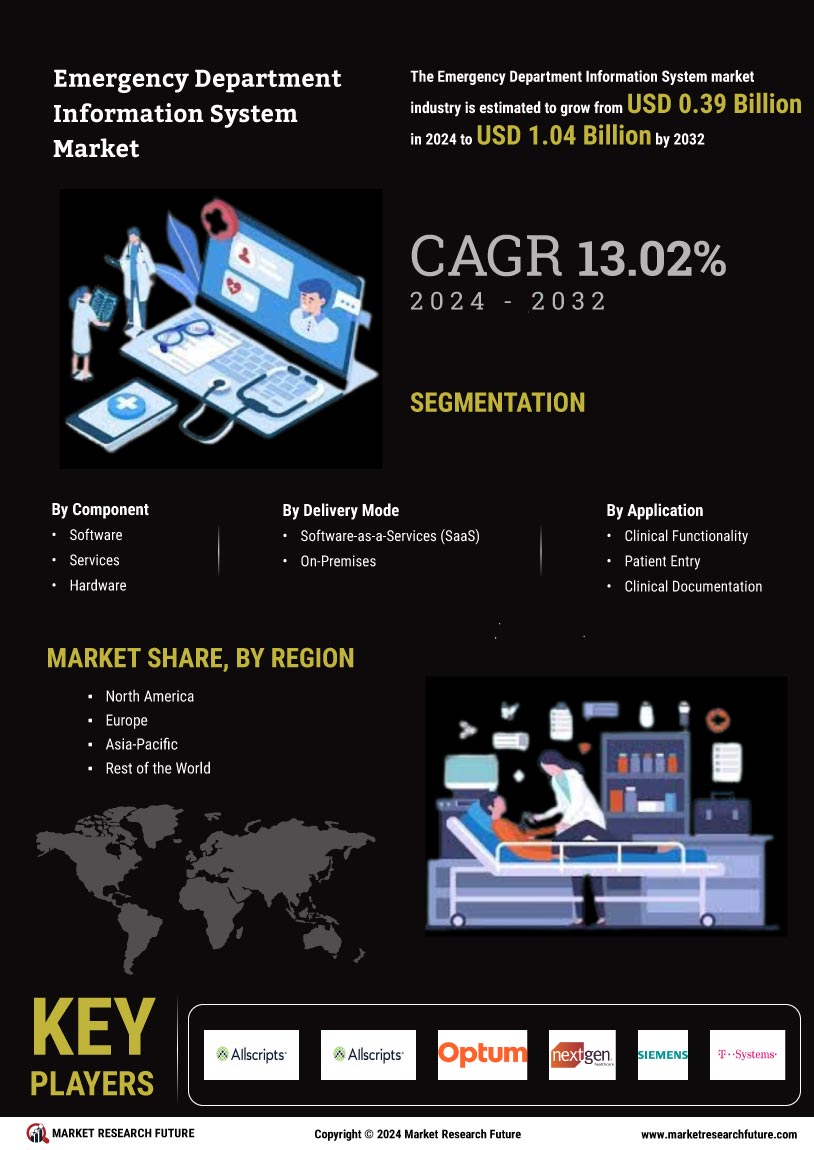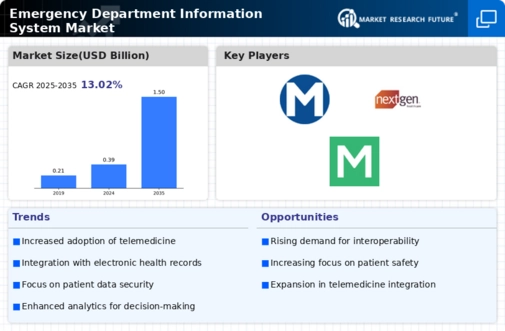Increased Focus on Patient-Centric Care
The shift towards patient-centric care is significantly influencing the Emergency Department Information System Market. Healthcare providers are increasingly recognizing the importance of engaging patients in their care processes. Information systems that facilitate communication, provide educational resources, and enable patient feedback are becoming essential. This focus on patient engagement is supported by data indicating that patient satisfaction correlates with improved health outcomes. As emergency departments strive to enhance the patient experience, the demand for information systems that prioritize patient needs is expected to grow, thereby propelling market expansion.
Technological Advancements in Healthcare
Technological advancements play a pivotal role in shaping the Emergency Department Information System Market. Innovations such as telemedicine, mobile health applications, and data analytics are transforming how emergency departments operate. These technologies enable healthcare providers to deliver timely and effective care, thereby enhancing patient outcomes. The market is witnessing a shift towards systems that incorporate artificial intelligence and machine learning, which can predict patient needs and optimize resource allocation. As these technologies continue to evolve, they are likely to drive the adoption of advanced emergency department information systems, fostering a more efficient healthcare environment.
Regulatory Compliance and Quality Standards
Regulatory compliance is a critical driver in the Emergency Department Information System Market. Healthcare organizations are mandated to adhere to stringent regulations and quality standards, which necessitate the implementation of comprehensive information systems. These systems assist in maintaining compliance with various healthcare regulations, including those related to patient privacy and data security. The market is influenced by the need for systems that can efficiently manage documentation and reporting requirements. As healthcare regulations evolve, the demand for adaptable and compliant emergency department information systems is expected to rise. This trend indicates a potential growth trajectory for the market as organizations seek to mitigate risks associated with non-compliance.
Growing Need for Data-Driven Decision Making
The growing emphasis on data-driven decision making is a key driver in the Emergency Department Information System Market. Healthcare organizations are increasingly relying on data analytics to inform clinical decisions and operational strategies. Information systems that provide comprehensive data insights enable emergency departments to identify trends, allocate resources effectively, and improve patient care. The market is witnessing a rise in demand for systems that integrate data from various sources, allowing for a holistic view of patient care. This trend suggests that as healthcare providers seek to enhance their decision-making capabilities, the adoption of advanced emergency department information systems will likely increase.
Rising Demand for Efficient Patient Management
The Emergency Department Information System Market is experiencing a notable surge in demand for efficient patient management solutions. As emergency departments face increasing patient volumes, the need for streamlined processes becomes paramount. Systems that enhance patient flow, reduce wait times, and improve overall care quality are sought after. According to recent data, emergency departments are projected to handle over 150 million visits annually, necessitating robust information systems. These systems facilitate real-time data access, enabling healthcare providers to make informed decisions swiftly. Consequently, the integration of advanced technologies within these systems is likely to enhance operational efficiency, thereby driving market growth.

















Leave a Comment